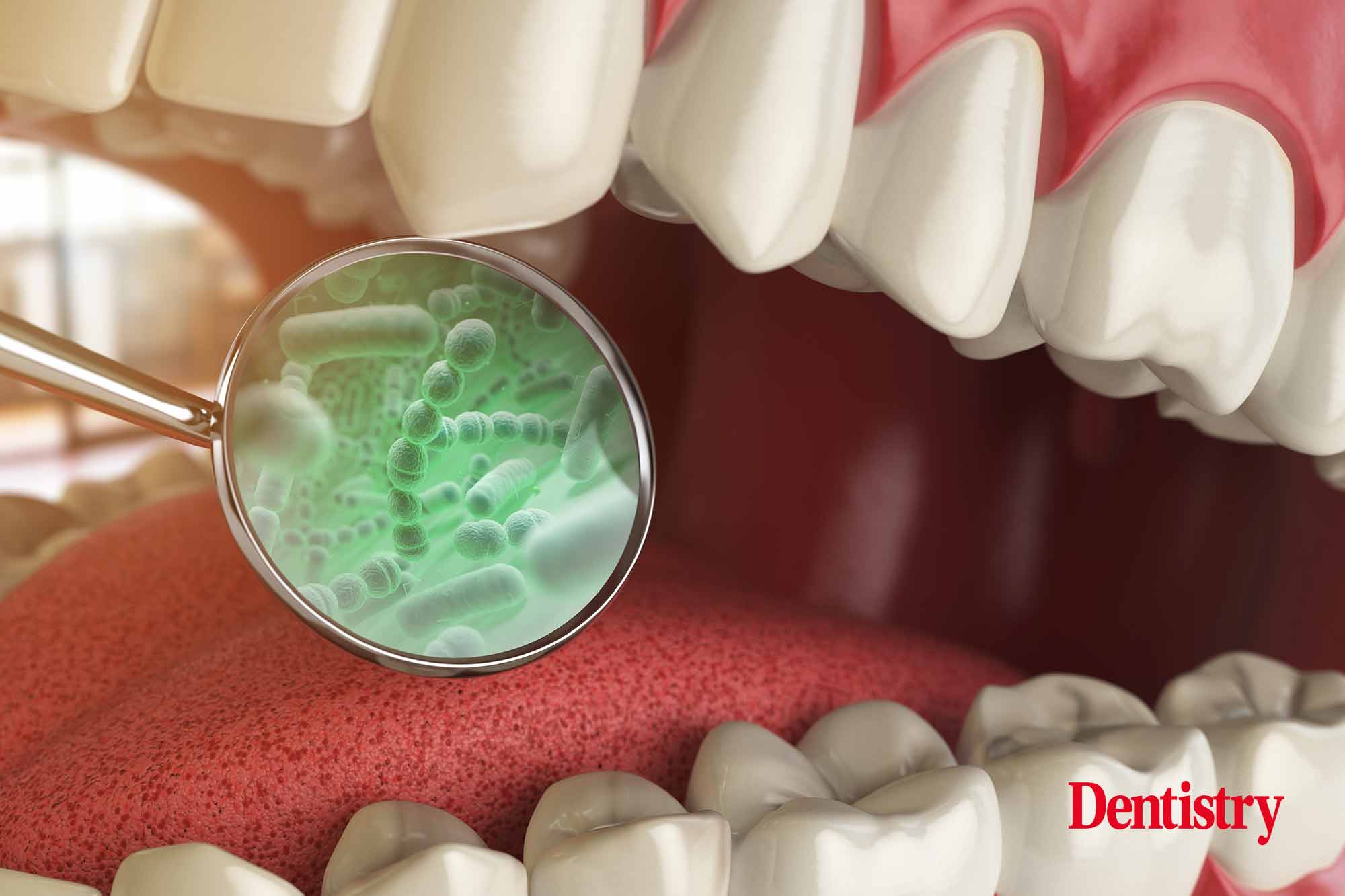 Ahead of the Guided Biofilm Therapy Summit in London this September, speaker Victoria Sampson shares her insight into the oral microbiome and how understanding it fully can help to support patients in their oral health efforts between appointments.
Ahead of the Guided Biofilm Therapy Summit in London this September, speaker Victoria Sampson shares her insight into the oral microbiome and how understanding it fully can help to support patients in their oral health efforts between appointments.
What is the oral microbiome and why do we need to keep it balanced?
The oral microbiome ecosystem comprises approximately 700 different bacteria, which make up two billion bacteria and is the second most diverse microbiome after the gut. It is impacted by everything we eat, drink and smoke – even by kissing – so is constantly changing.
Dysbiosis, which is an imbalance of the microbiome, occurs when, for example, we change our diet, take up new habits, don’t brush our teeth, have certain medical conditions, and take certain drugs.
This is certainly not an exhaustive list but offers insight into some of the most common causes of dysbiosis.
Then, when dysbiosis occurs, this contributes to oral health issues such as gum disease and tooth decay.
It can also impact systemic diseases, such as diabetes, Alzheimer’s, heart disease and high blood pressure due to oral bacteria travelling from the mouth to other parts of the body or low-grade chronic inflammation.
There is a considerable amount of interesting new research that has been released over the past few years demonstrating that a balanced oral microbiome is key not only to oral health but also general health.

How do you and your team make sure that patients understand how biofilm control supports their oral health, as well as systemic health? What do you say to them about it?
I often compare the oral microbiome to the gut microbiome. People seem to know a lot more about the gut microbiome than the oral, so it’s more understandable to patients.
I tell patients that, similar to the gut, if your oral microbiome is imbalanced and you have more bad bacteria than good, then you will have problems such as gum disease, decay and systemic issues, too.
Also, I do a lot of oral microbiome testing on my patients, so this is an easy way of showing them what bacteria they have, and which are ‘bad’ or ‘too high’. I find patients understand the issues more easily when they have numbers to refer to (like a blood test).
What therapeutic options do you use to help support optimisation of your patients’ oral health in practice and between appointments?
Within my practice, I perform a lot of Guided Biofilm Therapy (GBT).
GBT has been shown to have an amazing impact on the oral microbiome. It not only mechanically removes the biofilm and calculus but is also thought to modify the oral microbiome chemically.
For my perio patients, I often offer full-mouth disinfections, incorporating GBT as well as, sometimes, stronger antibacterial agents.
As for the GBT protocol, it uses an airflow technology that is impregnated with erythritol, a chemical that has been shown to be antibacterial, anticariogenic and anti-adherence.
This means that it not only helps remove the bacteria present in the oral cavity but also helps a healthy balanced microbiome recolonise after the appointment.
During my patient’s appointment, I coat the teeth in a plaque disclosing agent so I can see how their oral hygiene is at home. I also take photos of their teeth when they are coated with the plaque-disclosing agent.
This allows me to compare their plaque scores between appointments and is a great motivational tool.
I tailor a personalised oral hygiene regime for patients to take home, too. It’s not enough to tell a patient to brush twice a day and interdentally. They need to know which toothbrush, which toothpaste, what colour Tepe brush to use, whether they need any antimicrobial mouthwashes.
I even also advise on supplements and diet, when appropriate.
With the patients I do microbiome testing on, I am guided by their oral microbiome profile as to which products to use to guide them back to a balanced oral microbiome. This is often a combination of antimicrobial mouthwashes for a short amount of time, followed by probiotics and/or prebiotics.
How does GBT facilitate your workflow and team approach between you as the dentist and the dental hygienist?
GBT is a predictable solution for biofilm management. It has eight steps that we follow for every patient.
This means that there is consistency with treatment for all our patients, no matter who performs the treatment.
It also allows me to monitor treatment easily, if GBT is being performed by the hygienist.
The GBT protocol in eight simple steps
- Assess – probe and screen every clinical case
- Disclose – make biofilm visible
- Motivate – raise awareness and teach
- Airflow – remove biofilm, stains and early calculus
- Perioflow – remove biofilm in >4 to 9 mm pockets
- Piezon no pain – remove remaining calculus
- Check – make your patient smile
- Recall – a healthy patient equals a happy patient.
From your point of view, why is airflow better than using traditional metal instruments to get the job done?
Patients absolutely love GBT. The airflow is comfortable, easy to use and very effective at stain removal.
The Piezon technology automatically increases power when resistance at the tip increases, and automatically decreases power when resistance at the tip decreases. This makes the treatment minimally invasive and pain-free.
Unlike standard prophylaxis systems, GBT incorporates erythritol, an antibacterial chemical into its technology.
As I mentioned earlier, erythritol is antibacterial, anti-cariogenic and anti-adherent.
Gum disease is caused by bacteria, therefore incorporating erythritol into the treatment process improves treatment outcomes.
And then, just referring back to the minimally invasive aspect of GBT, removing staining with a prophy paste – as is done with traditional methods – is actually extremely damaging to the enamel suprastructure.
I compare prophy paste to a skin exfoliant for your teeth but, unlike your skin, your enamel does not reproduce and grow.
Therefore, you are just removing the enamel suprastructure every time you use prophy paste. You only have one layer of enamel, so you need to take care of it!
Airflow does not impact the enamel but still removes staining effectively.
What advice would you offer to anyone considering investing in airflow equipment/protocols?
GBT has been a real game-changer for our practice. Patients find it much more comfortable and actually look forward to their clean for once!
From a clinical perspective, I can visibly see the difference in my patients’ gums, oral health and their compliance once we switch to GBT.
I honestly don’t think I could go back to using a standard cleaning system again, as I would feel as if I was doing my patients a disservice.
The guided biofilm therapy summit is coming to London
The GBT summit is coming to London on 16 September 2022 from 9am – 4pm at the Royal College of Physicians. Earn five ECPD hours.
As part of an international series of congresses, the GBT Summit in London will bring together leading international experts and clinicians to share information about preventive dentistry and modern therapies to support existing GBT users and those looking for new ways to elevate their skillset.
The summit is ideal for anyone who is focused on the delivery of front-line oral health for patients, including hygienists, therapists, dentists, periodontists, and any other dental professional who would like to increase their knowledge to support their team’s preventive efforts.
The exciting line-up for the day is as follows:
- Victoria Sampson – The oral microbiome – what is it and why is it so important?
- Faye Donald – GBT clinical case study
- Alfonso Rao – My implant full arch went really well…but what to do after surgery
- Anna Middleton – Using GBT to build direct access
- Celso Da Costa – Why invest in prophylaxis?
- Jolene Pinder – GBT clinical case study
- George Cheetham – Making hygiene appointments a priority within the practice workflow
- Benjamin Tighe – GBT clinical case study
- Reena Wadia – Periodontal therapy
- Lottie Manahan – GBT clinical case study.
Places are limited, so don’t delay!
To register and book your place, simply visit dentistry.co.uk/gbt-summit.


